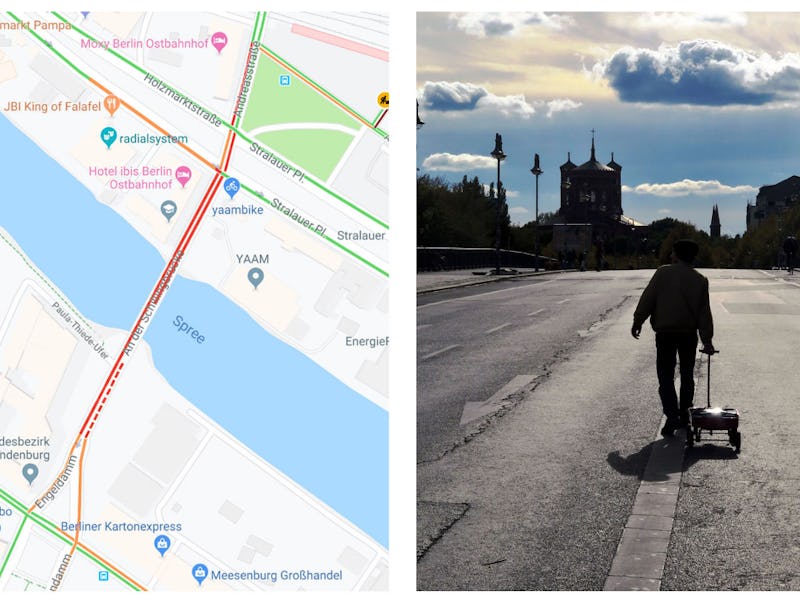Google is mulling what to do after an artist created a fake traffic jam on Maps
Google Maps saw what he did, and it might impact how its service works.

As we reported earlier this week, a performance artist named Simon Weckert recently released a video of him creating a fake traffic jam on Google Maps in Berlin by walking down a street pulling 99 phones with the GPS activated in a wagon. This actually caused some in the area to be directed away from that street on Google Maps to avoid the fake traffic jam. Weckert did this partially to draw attention to how Google Maps directs where we go and the multiple other ways it has become ingrained in our daily lives.
The video went viral on social media, and it apparently caught the attention of Google itself. We reached out to Google to see if the company had taken notice of the viral video and got a response from a Google spokesperson explaining what they thought about it.
"Traffic data in Google Maps is refreshed continuously thanks to information from a variety of sources, including aggregated anonymized data from people who have location services turned on and contributions from the Google Maps community," the spokesperson tells Inverse. "We've launched the ability to distinguish between cars and motorcycles in several countries including India, Indonesia and Egypt, though we haven't quite cracked traveling by wagon. We appreciate seeing creative uses of Google Maps like this as it helps us make maps work better over time."
Google would not comment on if its planning to use what it learned from Weckert's experiment to improve Google Maps in some way, but I'm pretty sure they've been discussing it. Though Weckert was doing this for the purpose of art, it's not hard to imagine someone creating an artificial traffic jam for more nefarious purposes. It's not a good thing for Google that someone could use a trick like this to direct traffic any way they want to, even if it's unlikely many people would try a trick like this.
As we mentioned in our previous article, some said in their responses to the video that this isn't the only way a virtual map can be tricked into thinking there's a traffic jam when there isn't one. One user on Hacker News explained that a train full of people passing by a street can create a nonexistent traffic jam on a virtual map. At least until the train passes, that is.
See also: Why Google Maps May Actually Make You Worse at Following Directions
It's worth noting that Google Maps will be celebrating its 15th birthday on February 8th. It's almost hard to remember a time when we didn't have the app to tell us where we're going. Google wasn't the first company to create navigation software, but it's become the most popular navigation app out there. If you're wondering what was the first commercially available navigation system, it was launched back in 1985 by a company called Etak. It was only used in cars, but I guess we've come a long way.